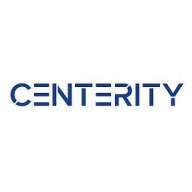

Splunk Observability Cloud and Centerity Monitor compete in enterprise-grade monitoring solutions. Centerity Monitor has an advantage with comprehensive features for complex IT environments, while Splunk offers a more intuitive experience.
Features: Splunk Observability Cloud offers real-time monitoring, anomaly detection, and seamless integration with existing IT infrastructure. Centerity Monitor includes extensive monitoring capabilities like virtualization, endpoint, and application monitoring, providing holistic visibility across various metrics.
Ease of Deployment and Customer Service: Splunk Observability Cloud provides a cloud-based deployment model, reducing setup time and offering responsive customer service. Centerity Monitor's on-premise or hybrid approach allows greater customization, extending deployment time but supported by personalized customer service.
Pricing and ROI: Splunk Observability Cloud offers scalable, cloud-oriented pricing with significant ROI for cloud-based businesses. Centerity Monitor, despite a higher setup cost, presents substantial ROI by effectively managing multifaceted IT infrastructures, emphasizing value in complex monitoring scenarios.
| Product | Market Share (%) |
|---|---|
| Splunk Observability Cloud | 1.8% |
| Centerity Monitor | 0.2% |
| Other | 98.0% |

| Company Size | Count |
|---|---|
| Small Business | 20 |
| Midsize Enterprise | 10 |
| Large Enterprise | 43 |
Splunk Observability Cloud offers sophisticated log searching, data integration, and customizable dashboards. With rapid deployment and ease of use, this cloud service enhances monitoring capabilities across IT infrastructures for comprehensive end-to-end visibility.
Focused on enhancing performance management and security, Splunk Observability Cloud supports environments through its data visualization and analysis tools. Users appreciate its robust application performance monitoring and troubleshooting insights. However, improvements in integrations, interface customization, scalability, and automation are needed. Users find value in its capabilities for infrastructure and network monitoring, as well as log analytics, albeit cost considerations and better documentation are desired. Enhancements in real-time monitoring and network protection are also noted as areas for development.
What are the key features?In industries, Splunk Observability Cloud is implemented for security management by analyzing logs from detection systems, offering real-time alerts and troubleshooting for cloud-native applications. It is leveraged for machine data analysis, improving infrastructure visibility and supporting network and application performance management efforts.
We monitor all IT Infrastructure Monitoring reviews to prevent fraudulent reviews and keep review quality high. We do not post reviews by company employees or direct competitors. We validate each review for authenticity via cross-reference with LinkedIn, and personal follow-up with the reviewer when necessary.